|
Mention the Channel Islands and most people will reply “ah yes, Guernsey or Jersey, or perhaps that other odd little one where they don’t allow cars, Sark.” Alderney is more likely to raise a blank expression. It is there; the smallest of the main three islands barely three and a half miles long by one and a half miles at its widest. Usually reached by air from Southampton after a forty to forty five minutes flight depending on which way the wind is blowing. Alderney was totally evacuated during World War II following the German Occupation of the Channel Islands. On Sunday June 23rd 1940 the population, including the author of this article, left at two hours notice, being allowed one suitcase per person by way of possessions. All else was abandoned. The islanders were not to see their home again until December 1945. I enjoy irregular visits from time to time, meeting old friends and new. Such was September 2009 when I was pleased to come upon an old friend in the form of the decorative low walling in the accompanying illustrations. They form part of the building, a single story wooden framed and shingled bungalow built in the early 1950’s by my friends Dan and Iris Godfray and known then as Quesnard Cabin (Figures 1&2). This takes its name from the nearby Victorian Fort Quesnard and Trinity House Quesnard Lighthouse. It is most likely that the idea for the shell decoration and design came from Iris, She was the artistic one, writing her own poetry and creating her own version of a barometric weather glass. The shells came naturally to hand, Ormers (Haliotis tuberculata) and Scallops (Pecten maximus) both edible, as by products of shell fishing. Ormers were sought at low water Spring tides when they were more easily obtainable. The necessary equipment being an Ormer hook and the cut off lower part of a hessian sack which drained better than a bucket. The author as a young boy together with others would get their Ormer hooks fashioned by the local blacksmith (Mr Gaudion) and off we would go. I think that for us boys it was more of a seasonal ritual, like conkers, rather than being very useful, recalling that ormers needed a good bashing to tenderise them and a long simmering stew to render them palatable. Nevertheless, they were an important part of the domestic economy in earlier island days. I think Iris probably obtained the scallops from the local fishermen at the quayside although they had their own little boat for setting pots and line fishing kept at Godfray’s Creek opposite the cabin. Having got the shells I conjecture that Iris might have laid out the design shape on the ground to obtain an outline which could be transferred to the wall to which Dan would apply a rendering of mortar in which to inset the shells. It may be noticed that the background mortar only seems to embrace the design outline with the main wall construction being random brick and granite. Figure 3 shows a fish of Ormer shells and the wall top of same and Scallops in the wall top behind. The fish contains just over one hundred shells and readers may like to work out its size from calculating typical Ormer shells ranging from 7cms to 11cms. Figure 4 is a design using Pecten maximus and other smaller shells and Figure 5 of fish in Scallops and wall top of Ormers. It is interesting to compare this example with other shell art (e.g The Shell Cottage: Mollusc World 19, March 2009). Although the Alderney example might be primitive by comparison it is nevertheless charming. I fondly recall many a visit to Dan and Iris (a distant relative through marriage), for a chat over a cup of tea. They died a few years ago and sadly the dwelling was pulled down. It has been replaced by a modern bungalow on the same site. Happily the States of Alderney issued a planning condition to ensure that the wall and its shell designs be retained as a unique feature. Should you visit Alderney and come to a sharp dogleg in the narrow road on your way to the lighthouse you will find and I hope enjoy this treasure in memory of Dan and Iris. |
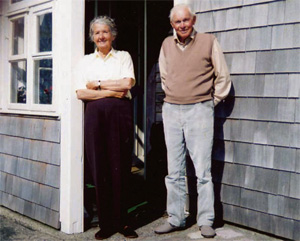
Figure 1 Dan and Iris Godfray at Quesnard Cabin
|
Ormers and scallops: a Fishy Tale from Alderney
Issue
23
Page
26

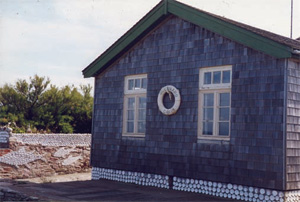 Figure 2: Quesnard Cabin showing fish designs in shells on wall. Note also scallop shells around foundations of bungalow
Figure 2: Quesnard Cabin showing fish designs in shells on wall. Note also scallop shells around foundations of bungalow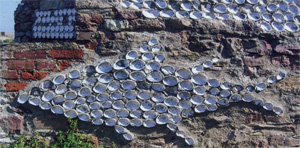 Figure 3: Fish design in ormer shells (Haliotis tuberculata). Count them!
Figure 3: Fish design in ormer shells (Haliotis tuberculata). Count them!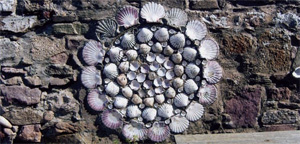 Figure 4: Design using scallop shells (Pecten maximus) & other smaller shells.
Figure 4: Design using scallop shells (Pecten maximus) & other smaller shells.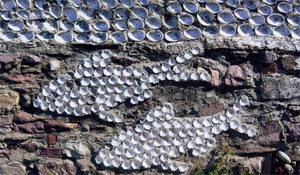 Figure 5: Fish designs in scallop shells & ormer shells along top of wall. (Photos: John Glasgow)
Figure 5: Fish designs in scallop shells & ormer shells along top of wall. (Photos: John Glasgow)